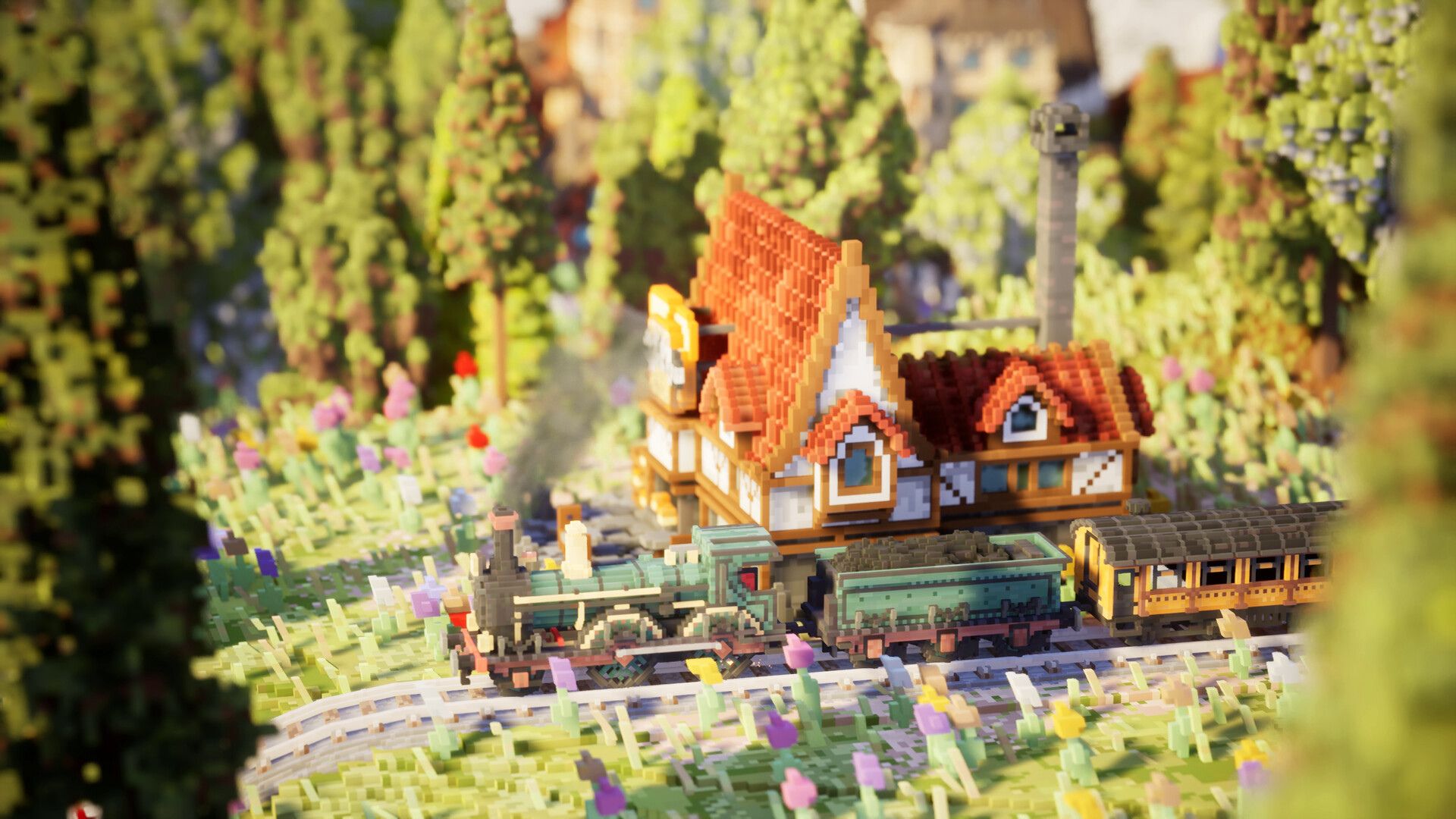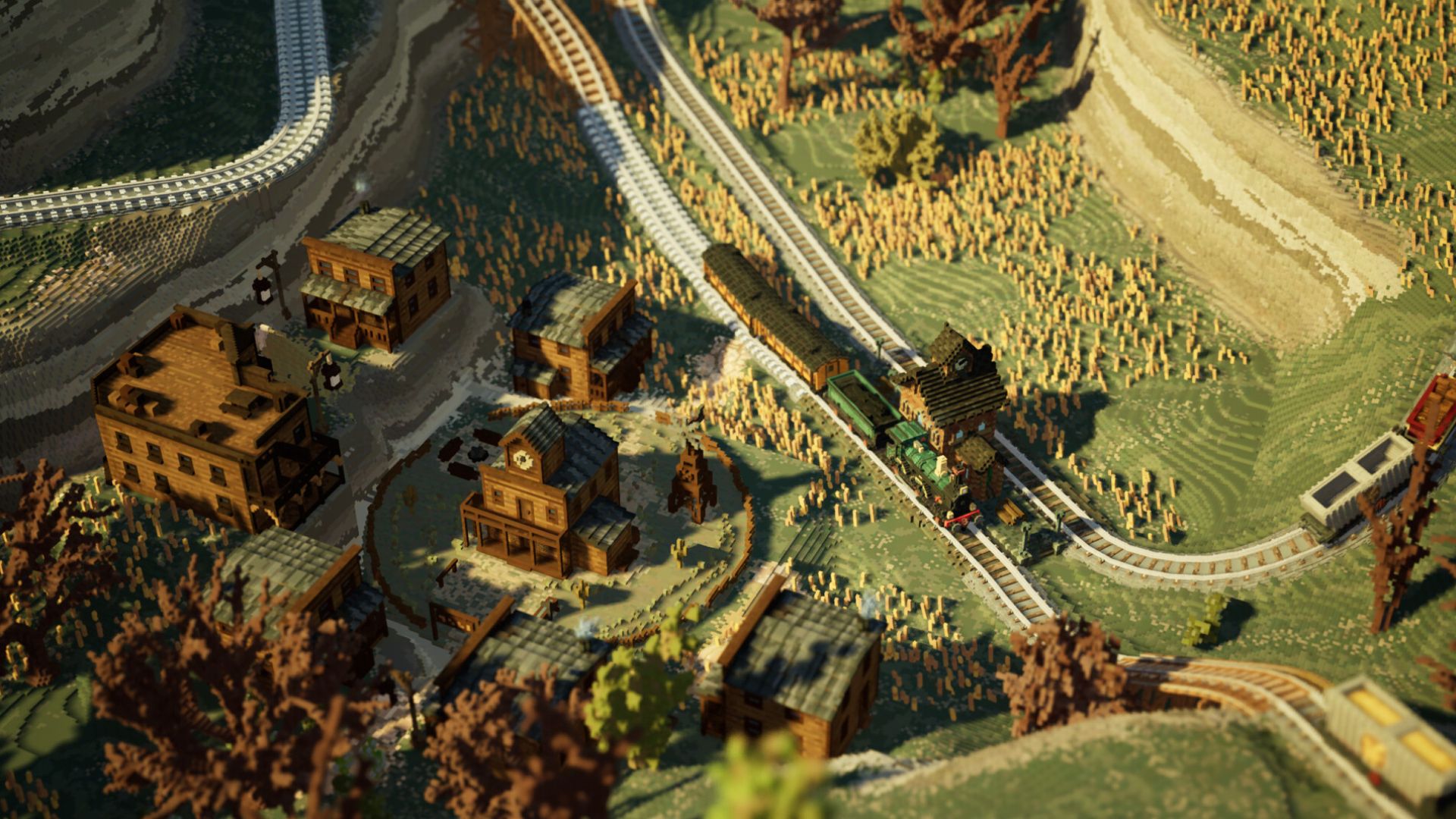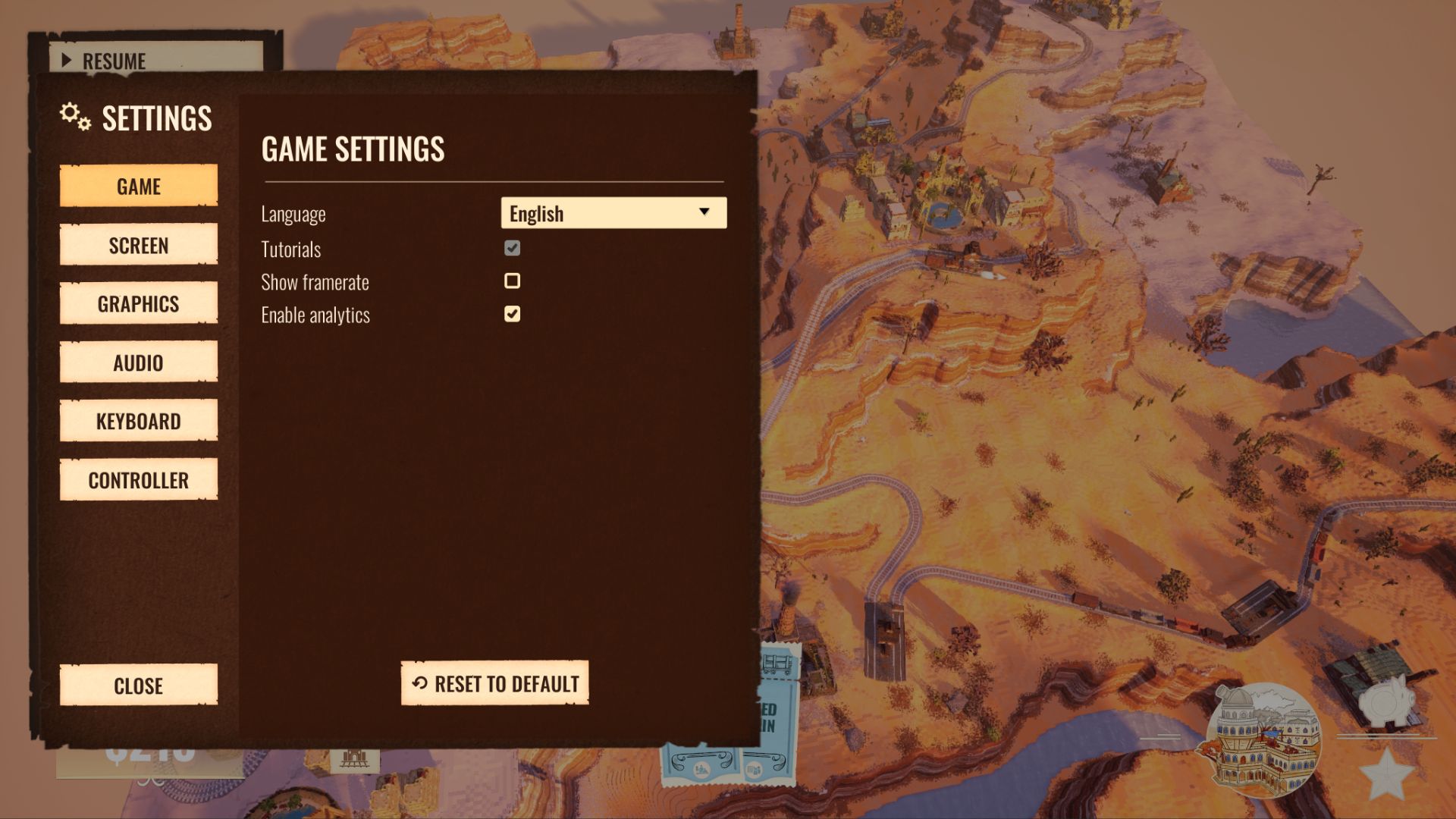TechRadar Verdict
The concept of Station to Station sounds incredibly simple at first, but this sweet pixelated world will enchant you for hours on end - regardless of your passion for trains or railway networks.
Pros
- +
Plenty of content and variation to keep things fresh
- +
Simple to pick up, impossible to put down
- +
In-game challenges feed into replayability
Cons
- -
Cannot automatically track and watch a train’s journey, you have to scroll alongside it
- -
Next to no accessibility options
Why you can trust TechRadar
Platform reviewed: PC
Available on: PC
Release date: October 3, 2023
Station to Station is exactly what it says on the tin: a minimalist and relaxing game about building railway connections and moving things from station to station. You’ll pour hours into building stations and connecting buildings to then transport your goods to a city, all while bringing life back to the world's desolate landscapes. It’s incredibly simple in premise, but it’s astoundingly fun once you get stuck in.
Regardless of your relationship with world-building simulators or anything that relies on resource management in general, Station to Station is a must-play for anyone looking for a relaxing experience. If you’ve played games like Before We Leave, Islanders, and Terra Nil, you’ll be familiar with the routine of finding out what you have to do, and then planning the best way to complete the task, but what separates it from these games is the extreme lack of feeling pressured due to resource management and instead the emphasis on working at your own pace.
Bring me to life

To start out, the map feels a little on the small side, since it’s just a square with a handful of buildings scattered across. As you begin connecting wheat farms to mills, then mills to bakeries, Station to Station hints at the complexity to come as it gently holds your hand while teaching you how to place stations and tracks. It’s an essential step, but once complete you’ll have a firm understanding of the game and the intricate systems that underpin it.
As you begin to breathe a new life into these landscapes and connect each building through your railways, the color starts to return, and the music starts to swell as both a visual and auditory representation of your progress. I love adaptive music within games that require you to build from the ground up since it feels far more rewarding than just being given a sticker at the end of the level and told 'good job', and it’s something Station to Station excels in. You feel proud of the work you’ve done as the world springs to life, and it’s enough motivation alone to push you through to the next level.
To keep the experience exciting, Station to Station hosts six different biomes to bring to life too, so when you feel like you’ve exhausted one, you can move on to the next and encounter entirely new cities and requirements in fresh settings. Plus, each new biome is home to a new creature to locate across the map, like horses for plains, camels for deserts, all of which you can zoom right in on - which I might’ve spent more time doing than I like to admit, but in my defense, this was required for a few levels so that’s my excuse.
Although there is a little room for error, you are free to completely restart levels or from a checkpoint if you realize you’ve misplaced or connected a rail that would be better off elsewhere. I don’t usually go back and correct myself when I notice I make an error like this, but the lax nature of Station to Station helps you feel like there are no real consequences if you do have to retrace your steps a little bit, so there’s no shame in feeling like you might benefit from doing so. Even if you just want to organize things a bit neater, it feels like an integral part of the game to go through this process rather than feeling like you’re going back on yourself.
The train keeps a-rollin'

The only real restriction in Station to Station is your money. Placing stations and laying tracks isn’t free, and you will eventually run out of funds if you’ve been busy creating roller coaster-style railways for your freight trains to enjoy on their commute. But, you will always start with an ample amount to get set up, and the second you start producing things like bread and cheese, you’ll start to make money again. This emphasizes the importance of planning, which the game revolves around, and then goes back to my point about how restarting from checkpoints is part of the process rather than a retracing of steps.
Sign up for breaking news, reviews, opinion, top tech deals, and more.

Watching the world spring to life as you begin to build from the ground up is always a rewarding experience. There’s nothing quite like watching life come back to what looks like an abandoned location as you start to get to grips with the game.
In addition to this, each level comes with two optional challenges for those who like a little more structure. One usually revolves around finances, challenging you to end a level with a certain amount left to your name, and the other will be more of a wildcard. You’ll be challenged to create rails that run for 2000m or cross three times, generally, just things that will require you to be a little more creative with your placements, but they are fun objectives to try and meet if you do struggle with just being told to build a network and left to your own devices.
Let off some steam

The freedom Station to Station provides you with to just build as you please is what I think makes the game so appealing. You don’t have to place things on specific tiles or against certain blocks, just as long as you can connect your stations to one another, the world is your oyster. Even with optional challenges, you can still work at your own pace without any repercussions if you don’t follow a specific routine, and that is so important in a game that claims to be relaxing.
Outside of it’s six regions, Station to Station comes equipped with a “custom game” mode, which lets you build your own maps according to your preferences, and really lets your creativity shine through. If you’re someone who doesn’t love the shackles of funds in world-building games, there’s a way to turn this off and simply build.
With games like Terra Nil and Dorfromantik, you can feel as though one misplacement will end up with you having to begin again, whereas with Station to Station, you are more willing and more likely to find a workaround if you do realize you’ve misplaced a rail, but it doesn’t feel as enjoyment-shattering even if you do have to go back to a checkpoint and evaluate your decisions again.
At its core, Station to Station is simply about learning to slow down and plan without feeling the limitations of deadlines or the pressure of resource management. Although its more relaxed content loop might not appeal to the action-seeking, high-stakes player, for someone looking for a game that just lets you chill, it’s a charming, unique little game that’s enough to keep you entertained for a decent chunk of time.
Accessibility

Unfortunately, Station to Station falls a bit short on accessibility settings. If you don’t fancy playing with a mouse and keyboard, the game does have full controller support, but as for in-game accessibility, your options are limited. Keybinding and custom graphics settings, alongside the ability to change the language of your game, are about as accessible as things get, but the nature of the game and lack of narration or dialogue, in general, means there’s no need for subtitles - so it gets a pass on that.
How we reviewed Station to Station
I played Station to Station for around 13 hours on PC using a mouse and keyboard. This was enough time for me to complete all six biomes the game offers, a handful of the optional in-game challenges, and explore the custom game mode. There are still several challenges for me to go back in and complete, which I definitely plan on doing.
For more games like Station to Station, you might want to check out the best indie games, or the best simulation games if you want to see the world from the perspective of a conductor rather than the network constructor.

Kara is an Evergreen writer at TechRadar Gaming. With a degree in Journalism and a passion for the weird and wonderful, she's spent the last few years as a freelance video game journalist, with bylines at NintendoLife, Attack of the Fanboy, Prima Games, and sister publication, GamesRadar+. Outside of gaming, you'll find her re-watching Gilmore Girls or trying to cram yet another collectible onto a shelf that desperately needs some organizing.
